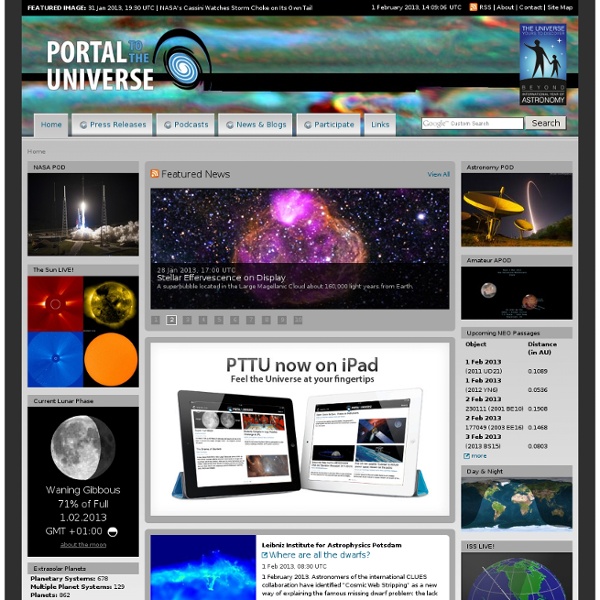



Andromeda Project The Violent Universe Please note that this course is self-paced and you can enroll at any time. The course itself is 9 weeks long and certificates are generated and distributed to learners who meet the 50% requirement every 3 months. The next scheduled dates for certificates to be released are 1st March 2015 and 1st June 2015. Interested in exploring the deadliest and most mysterious parts of our universe? Or, investigating black holes, which warp the very fabric of space-time around them? We will look at what we know about these objects, and also at the many unsolved mysteries that surround them. This course is designed for people who would like to get a deeper understanding of astronomy than that offered by popular science articles and television shows. You will need reasonable high-school level Maths and Physics to get the most out of this course.
: Pluto Time Pluto orbits on the fringes of our solar system, billions of miles away. Sunlight is much weaker there than it is here on Earth, yet it isn't completely dark. In fact, for just a moment near dawn and dusk each day, the illumination on Earth matches that of noon on Pluto. We call this Pluto Time. It's always Pluto Time somewhere, and NASA wants to see your view. Next Month, New Horizons will become the first spacecraft to have a close encounter with Pluto. #PlutoTime: we can't wait to see what it looks like in your world.
New paper shines light on little-understood process in astronomy A paper coauthored by Tom Maccarone, a Texas Tech University associate professor in the Department of Physics, studies one of the most important but least understood processes in astronomy: accretion, or the growth in mass of an object by gravitationally collecting material from its surroundings. The article, titled "Astrophysical accretion is a universal process in objects from proto-stars to supermassive black holes," is published in the most recent issue of the journal Science Advances. "In our paper, we discovered a relationship that spans the range of different types of accreting objects, from proto-stars, much like our sun was at its time of birth, to white dwarfs to supermassive black holes with a billion times the mass of the sun located in galaxies millions of light-years away," Maccarone said. "In these systems there is some characteristic timescale for the variability – typically the large brightenings and fadings occur with that timescale.